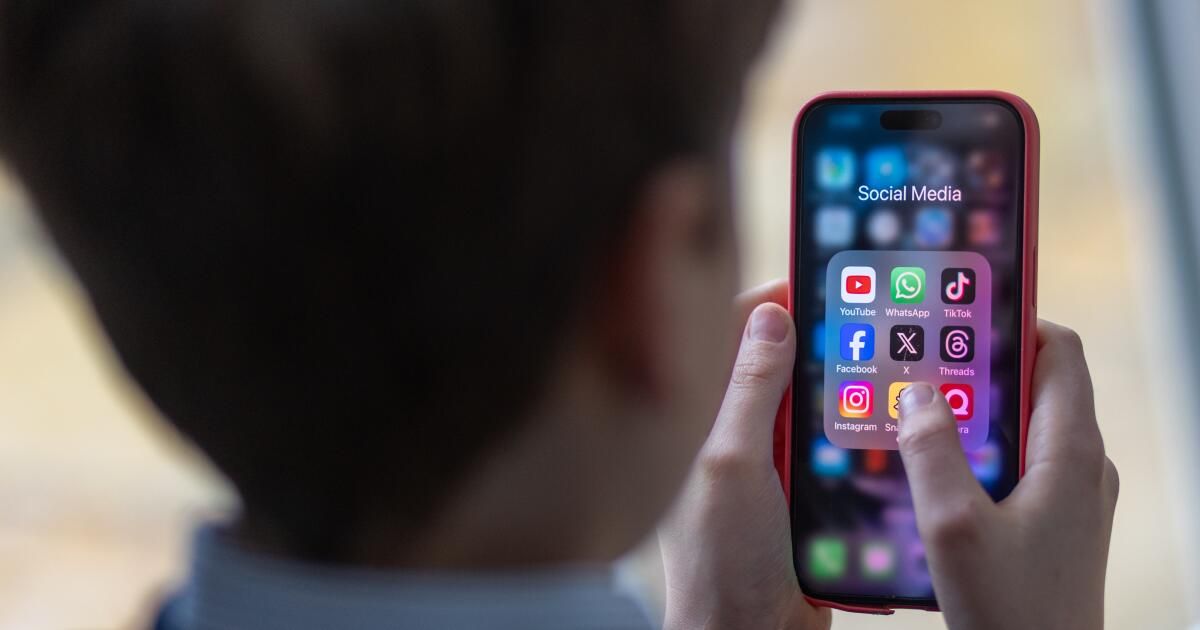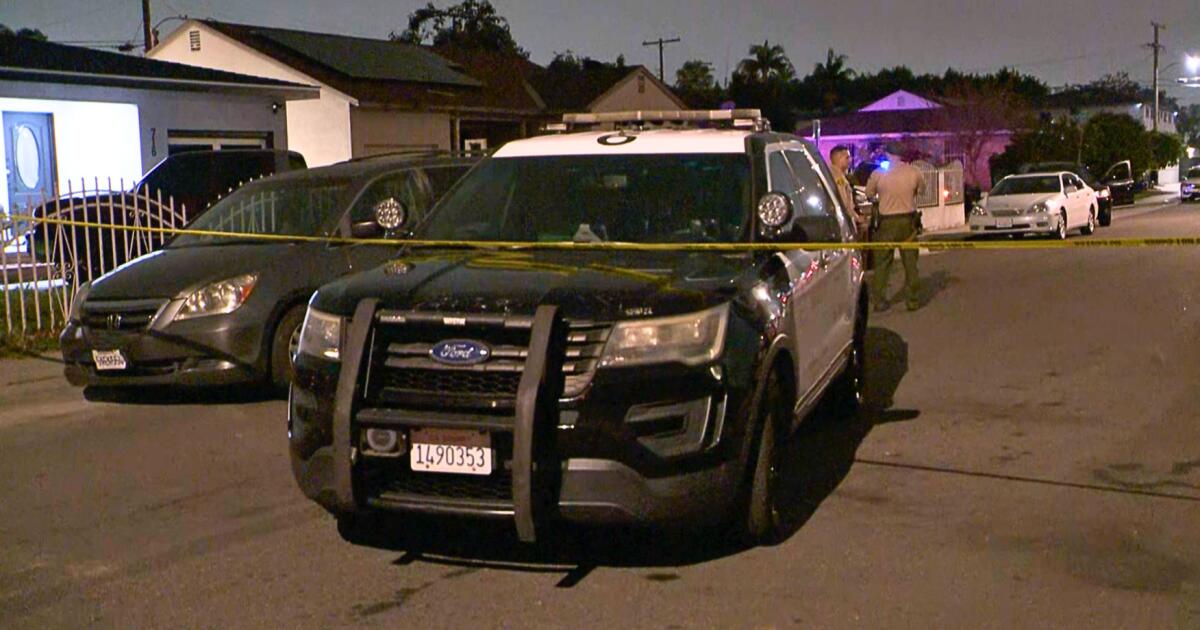Photographs showing former President Trump's bloodied face have appeared on social media platforms and news outlets in recent days, along with a video of his alleged assailant opening fire on the candidate during a rally on Saturday in Pennsylvania.
Also unavoidable were the images of the three other people shot at the event, one of them fatally, and of the body of the alleged shooter after he was killed by snipers.
These are the latest examples of the carnage often shown online, but they are by no means the most graphic. Since October 7, the Internet has been awash with images of the death and destruction caused by Hamas's attack inside Israel and Israel's crushing response in Gaza.
Researchers at the University of California, Irvine, say repeated exposure to explicit photos and videos is associated with psychological distress. Experts say it's important to understand how these images can affect mental health and recognize when it's necessary to take a break or reduce exposure.
Roxane Cohen Silver and E. Alison Holman are researchers and professors in Irvine’s Department of Psychological Sciences who have been studying the public health effects of graphic images, including those of the September 11, 2001, terrorist attacks, the 2013 Boston Marathon bombing, and the 2016 Pulse nightclub shooting in Orlando, Florida.
By studying people's repeated exposure to graphic images immediately after these events and over time, they found a correlation with acute stress, post-traumatic stress symptoms, fear of future attacks, and difficulty functioning at work and in social life.
One significant change their studies observed relates to how people consume these images or videos. People saw the devastation caused by the Sept. 11 attacks on television or read about it in the newspaper; the images they saw were chosen by an editor, Holman said.
Hours of television viewing immediately after the attacks were correlated with acute stress symptoms in a national sample of viewers outside New York City. Of the same sample, at least 6 percent had elevated levels of post-traumatic stress symptoms six months later, according to Holman and Silver’s perspective published in the Proceedings of the National Academy of Sciences.
In the case of the Boston Marathon bombing, the team found that the more often a person viewed graphic images of the attack, the greater the correlation between exposure to PTSD, fear of terrorism, and poorer daily functioning.
Violent events have not ceased in the United States or around the world, but our perception of such incidents and their frequency have.
In recent years, people have increasingly been getting their information from non-traditional news sources on social media that are largely unfiltered, Holman said.
As the COVID-19 pandemic unfolded and people were stuck at home with little to do, Silver said, people often flipped from one negative news story to another and another, mostly encountering images of tragedy.
In the past, Silver said, information about an incident had to be sought on television news or in print articles. Now, with social media platforms, “it's hard to avoid these types of images.”
More recently, social media users have witnessed the devastation and death of the war in Gaza through their social media channels, either through live streams or posted videos.
Holman and Silver's research suggests that people seek out this information because they have been exposed to such graphic images before, want to be informed about the incident, or have some kind of relationship with the victims.
“My colleagues and I would never say that people shouldn’t know what’s going on in the world,” Holman said. “We need to understand what’s going on in the world around us.” But we need to be able to do so “in a way that doesn’t bring us total trauma and leave us distraught and at risk for heart health issues.”
Holman strongly recommends ditching social media as a means of getting news and instead seeking out a traditional news source to catch up on what's happening locally or around the world.
Holman recommends setting aside a certain amount of time to read the news; Holman gives herself about 30 minutes, but says it varies from person to person. You can tell when it's time to stop reading or watching footage about a tragedy by understanding how you're reacting to what you're seeing.
How is your body reacting?
To avoid the feeling of distress, Silver says she tries to avoid graphic and violent images altogether. To keep up with current events, Silver says she reads news articles online and chooses not to view images or videos that include violence.
Another way Silver avoids graphic content is by staying off social media.
But many people don't have the ability to protect themselves from the proliferation of graphic images online, so Holman said it's important to recognize how your body reacts to exposure.
Holman said that when she sees images or news that distress or upset her and she focuses on consuming that information, she notices that she breathes faster or her heart beats faster.
She might get nervous and start making loud comments, such as, “Oh my God, what is wrong with people?” or “I can’t believe this.”
These reactions, Holman said, indicate that she is seeing things she cannot deal with, and that is a sign that she is consuming too much graphic or violent information.
When this happens, Holman said, she takes a deep breath and decides to finish the article or video later, or end her consumption for the day altogether.
Limit consumption of graphic images
Social media platforms use unique algorithms to determine what each user will see in their feeds. The algorithms “typically select information that increases user engagement to increase advertising revenue,” according to scientists at Northwestern University.
In a review published in the journal Trends in Cognitive Sciences, the authors wrote that social media channels are oversaturated with “prestigious, group-based, moral and emotional information,” or information from which users are strongly inclined to learn.
As a user, you might come across a graphic video of the war in Gaza, watch it for a few seconds, and move on to another, but after several videos, you might see another video from a different source. The algorithm makes it harder to avoid war-related content because you've interacted with it, so it assumes you'll interact with more of it.
At least on the major social networks, users are not surprised by graphic content. On Instagram and TikTok, a message saying “sensitive content” appears before the video or photo and allows users to decide whether they want to continue.
If you're trying to completely eliminate your exposure to graphic videos or images on social media, you can change your account preferences and remove the content from your feed.
Here's how various social media sites label graphic content and how to change your feed to exclude it:
- On YouTube, you can turn “Restriction Mode” on or off; it’s usually off for viewers by default. Turning it on removes adult content, including videos depicting drugs and alcohol, sexual situations, violence, political conflict (including war, crime, or terrorism resulting in death or serious injury), profane language, and degrading content.
- Instagram has step-by-step instructions online, accessible from privacy settings, on how to see less “sensitive content” in your feed. This could be content that depicts violence, discusses self-harm or suicide, is sexually explicit or suggestive, or promotes products such as tobacco vapes.
- X, formerly known as Twitter, lets you control whether you see sensitive media in posts.
- Facebook allows you to manage your feed using the “Reduce” option in your account settings. It will give you the option to further reduce graphic or violent content.
Checking the accuracy of a post
When browsing social media and seeing graphic or violent content, be aware that it may not always be accurate. Holman warns that users should not rely on a social media platform as a news source because “it's a place where you can get information that looks like news but isn't.”
One way to evaluate whether information you see on social media is legitimate is to check the source. The Sheridan Libraries at Johns Hopkins University have a checklist to help users verify and determine the accuracy of information. They suggest examining:
- The location of the poster. Is the poster in the location they are tweeting or posting about?
- Account followers. Who follows the account and who does the account owner follow?
- Confirmation sources: Can the information posted on the account be corroborated with other sources?
- Contextual updates. Does the user typically post about this topic? If so, what did previous or updated posts say?
- The age of the account. When was the account created? Hopkins recommends that social media users be wary of recently created accounts.
Images or videos may not only be inaccurate, but also taken out of context or mischaracterized. For example, last year, The New York Times reported on a video circulating on X showing a child crying for his siblings lost in the chaos of an airstrike, a scene that purportedly took place during the Gaza war. In reality, the video was from the Syrian war a decade earlier.












